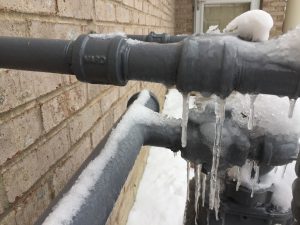Tips for Avoiding Frozen Pipes in Cold Weather: Expert Insights
Tips for Avoiding Frozen Pipes in Cold Weather: Expert Insights
Blog Article
What are your opinions regarding Helpful Tips to Prevent Frozen Pipes this Winter?

Winter can ruin your plumbing, particularly by freezing pipelines. Right here's just how to avoid it from taking place and what to do if it does.
Intro
As temperatures decrease, the threat of frozen pipelines increases, possibly resulting in pricey repair work and water damages. Comprehending how to avoid icy pipes is important for homeowners in cold climates.
Prevention Tips
Insulating at risk pipes
Cover pipes in insulation sleeves or utilize warmth tape to shield them from freezing temperature levels. Concentrate on pipelines in unheated or exterior locations of the home.
Heating strategies
Keep indoor rooms sufficiently heated up, specifically locations with plumbing. Open up closet doors to permit cozy air to distribute around pipes under sinks.
Exactly how to identify icy pipelines
Try to find lowered water flow from taps, uncommon odors or sounds from pipelines, and visible frost on subjected pipes.
Long-Term Solutions
Architectural changes
Consider rerouting pipelines far from outside wall surfaces or unheated areas. Add extra insulation to attics, cellars, and crawl spaces.
Upgrading insulation
Buy top notch insulation for pipes, attic rooms, and wall surfaces. Proper insulation helps preserve constant temperature levels and decreases the threat of frozen pipes.
Securing Exterior Pipes
Yard tubes and outdoor faucets
Disconnect and drain garden hoses before winter. Set up frost-proof faucets or cover outside faucets with protected caps.
Understanding Icy Pipelines
What causes pipes to freeze?
Pipelines freeze when revealed to temperature levels below 32 ° F (0 ° C) for prolonged periods. As water inside the pipelines freezes, it broadens, taxing the pipe wall surfaces and potentially creating them to rupture.
Threats and damages
Icy pipes can bring about water system disturbances, residential or commercial property damages, and pricey fixings. Burst pipes can flooding homes and cause comprehensive structural damages.
Signs of Frozen Water Lines
Determining icy pipelines early can stop them from rupturing.
What to Do If Your Pipelines Freeze
Immediate activities to take
If you presume icy pipes, keep taps open up to alleviate stress as the ice melts. Utilize a hairdryer or towels taken in hot water to thaw pipes slowly.
Conclusion
Preventing icy pipes calls for positive actions and fast responses. By understanding the causes, signs, and preventive measures, home owners can shield their pipes during winter.
6 Proven Ways to Prevent Frozen Pipes and Protect Your Home
Disconnect and Drain Garden Hoses
Before winter arrives, start by disconnecting your garden hoses and draining any remaining water. Close the shut-off valves that supply outdoor hose bibs and leave the outdoor faucet open to allow any residual water to drain. For extra protection, consider using faucet covers throughout the colder months. It’s also important to drain water from any sprinkler supply lines following the manufacturer’s directions.
Insulate Exposed Pipes
Insulating your pipes is an effective way to prevent freezing. Pipe insulation is readily available at home improvement stores and is relatively inexpensive. Pay close attention to pipes in unheated areas such as the attic, basement, crawl spaces, or garage. Apply foam insulation generously to create a buffer against the cold. You can also wrap your pipes in heat tape or thermostat-controlled heat cables for added warmth.
Seal Air Leaks
Inspect your home for any cracks or openings that could let in cold air. Seal any holes around the piping in interior or exterior walls, as well as the sill plates where your home rests on its foundation. Additionally, make sure to keep your garage door closed unless you’re entering or exiting. Leaving it open creates a significant air leak that can lead to frozen pipes.
Allow Warm Air Circulation
During cold snaps, it’s essential to allow warm air to circulate evenly throughout your home. Leave interior doors ajar to promote better airflow. Open kitchen and bathroom cabinets to help distribute heat consistently around the rooms. If you have small children or pets, be sure to remove any household chemicals or potentially harmful cleaners from open cabinets for safety.
Let Faucets Drip
A small trickle of water can make a big difference in preventing ice formation inside your pipes. When temperatures drop significantly, start a drip of water from all faucets served by exposed pipes. This continuous flow helps prevent the water from freezing. Additionally, running a few faucets slightly can relieve pressure inside the pipes, reducing the chances of a rupture if the water inside does freeze.
https://choateshvac.com/6-proven-ways-to-prevent-frozen-pipes-and-protect-your-home/

I recently found that page about How To Avoid Freezing Pipes while doing a lookup on the search engines. So long as you liked our article plz do not forget to pass it around. Thanks for taking the time to read it.
Call Today Report this page